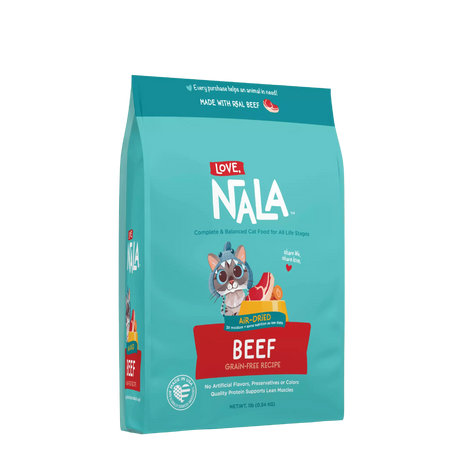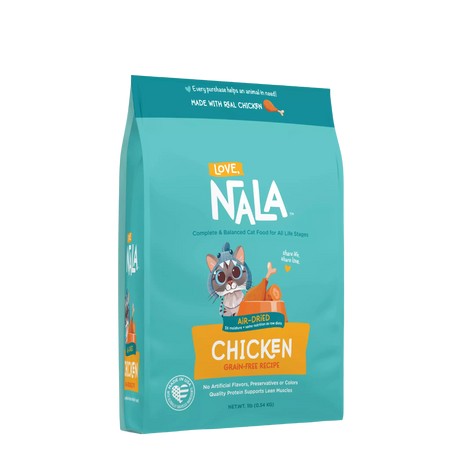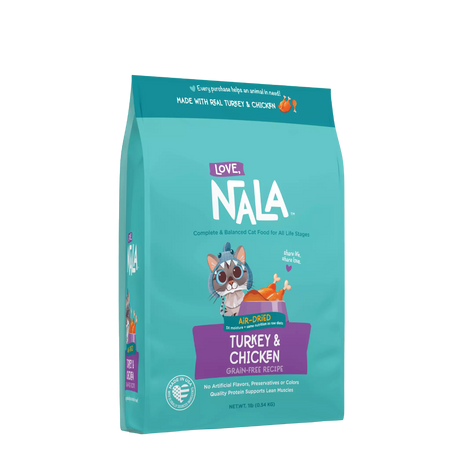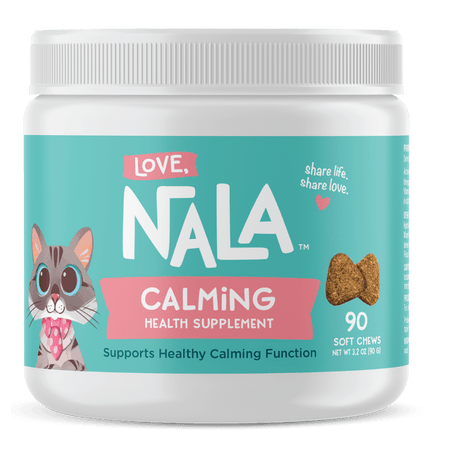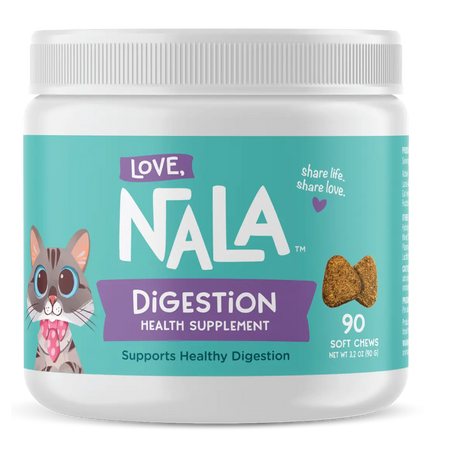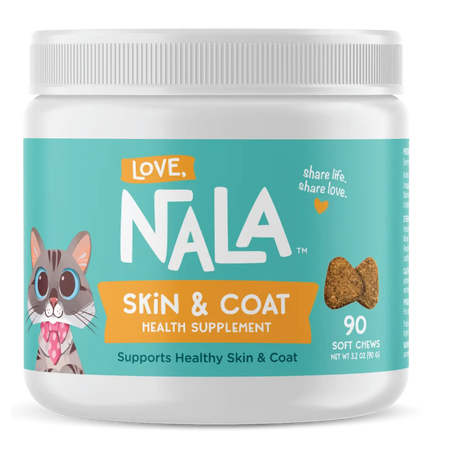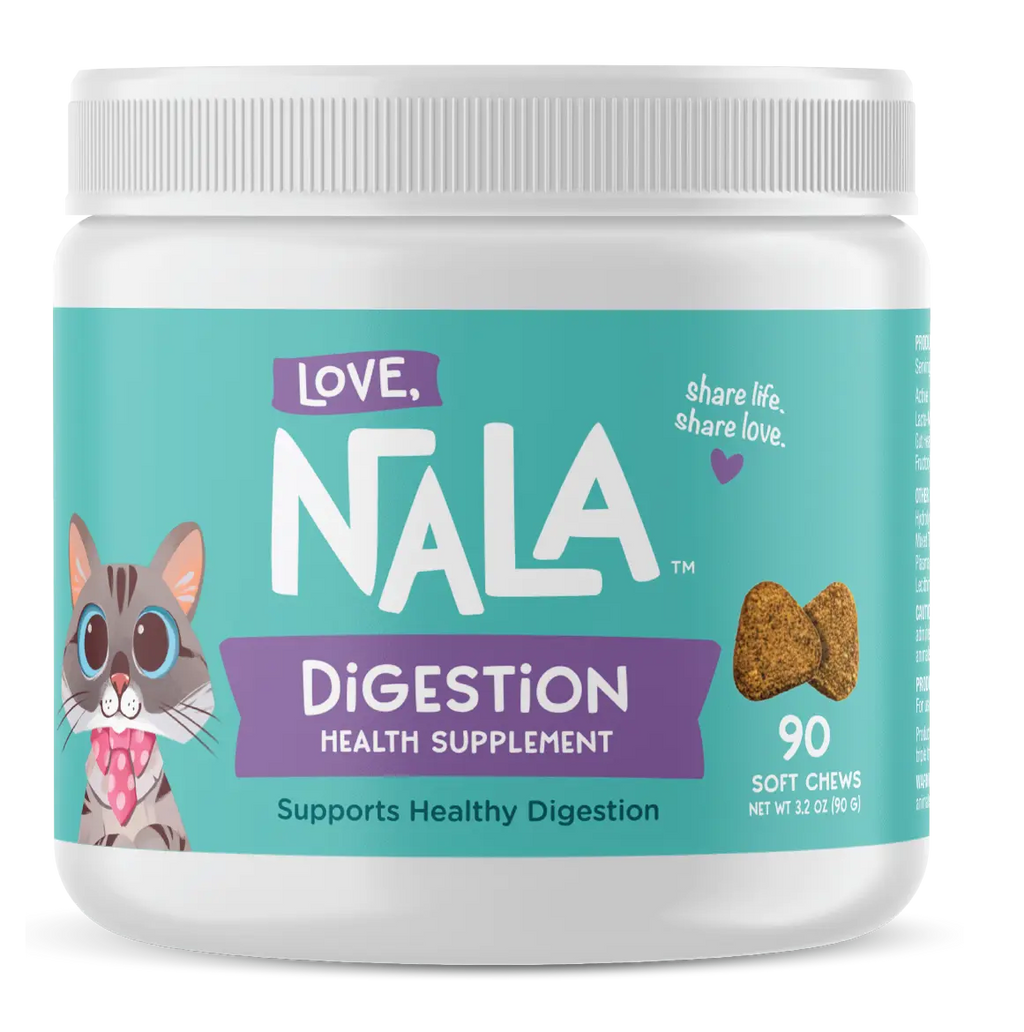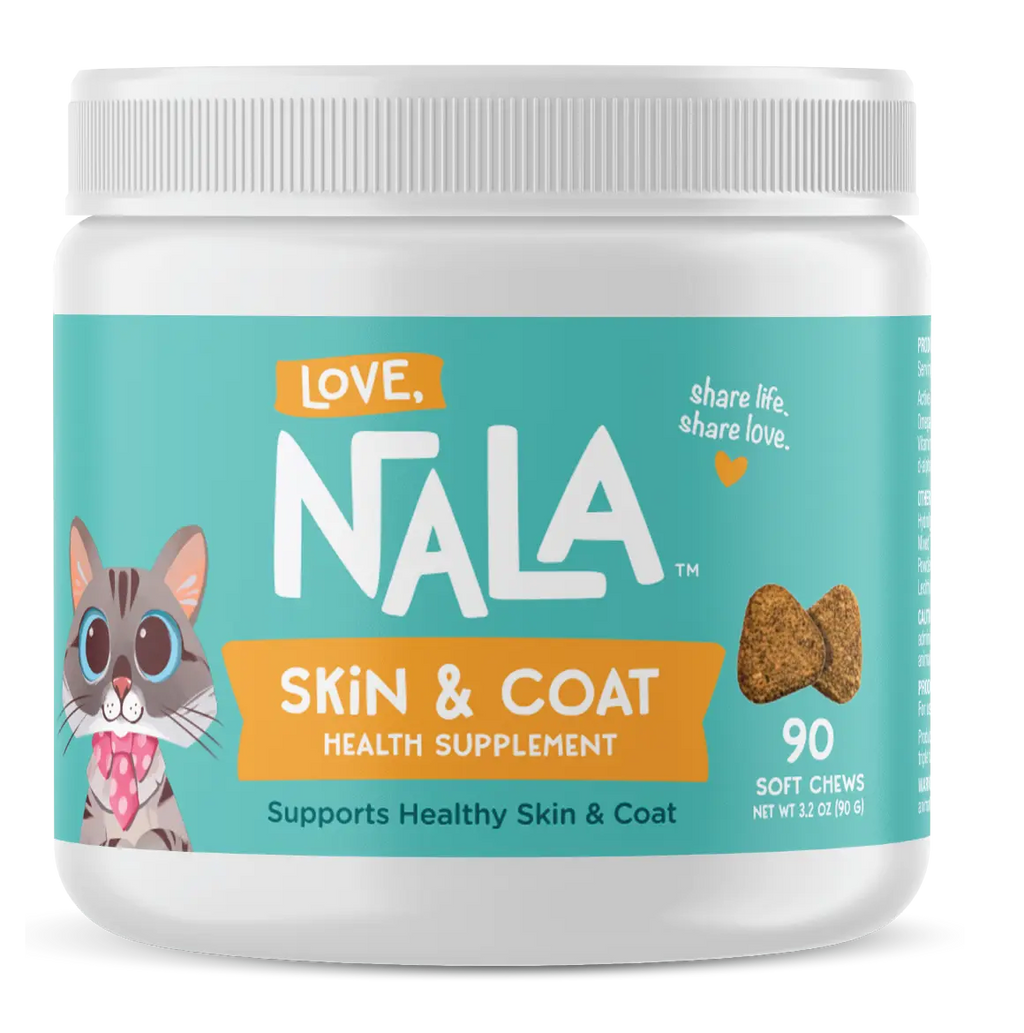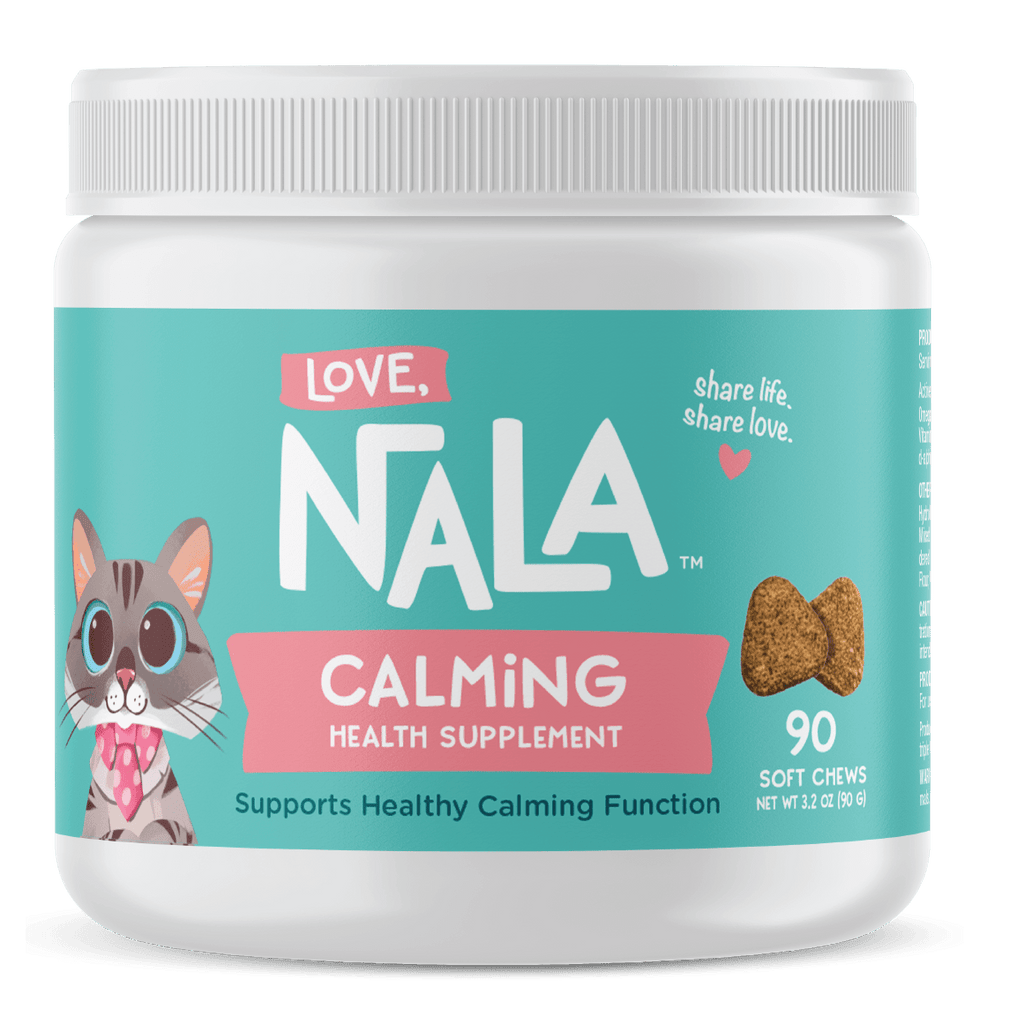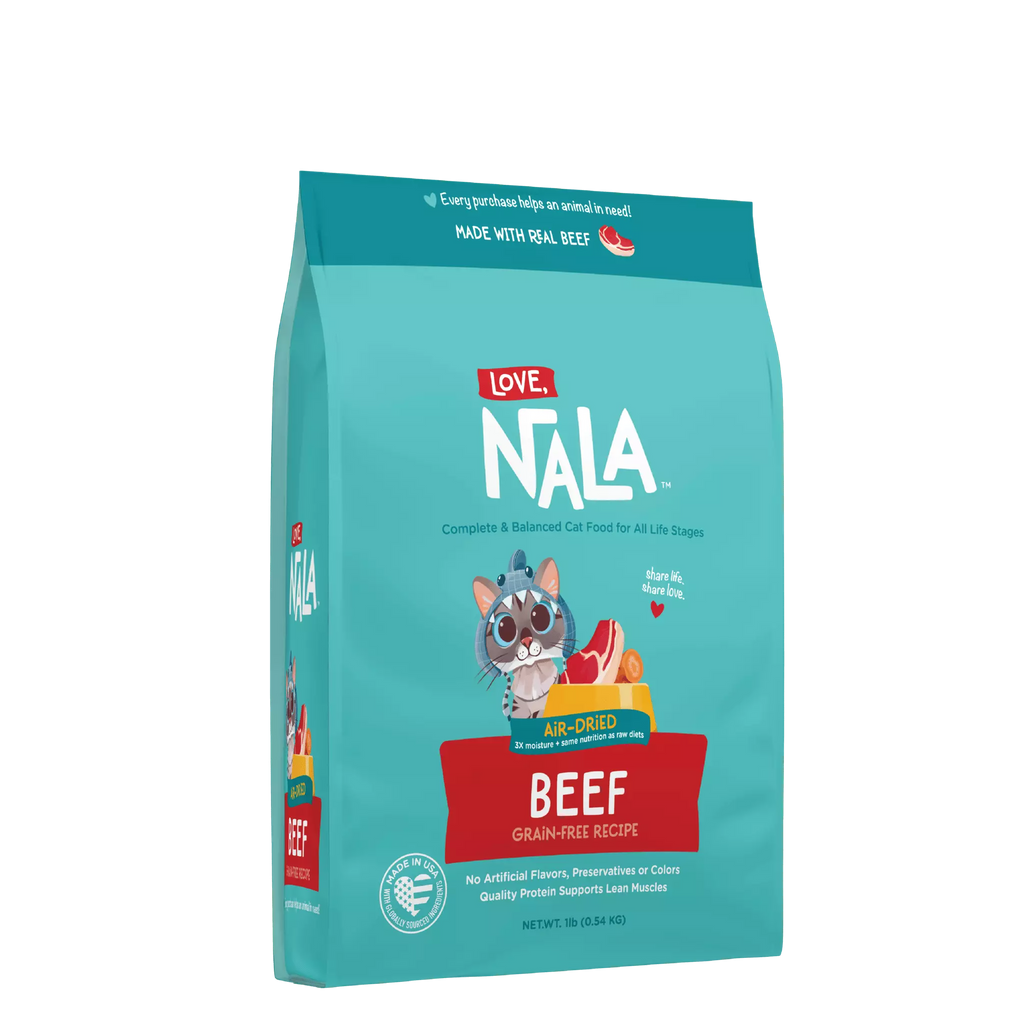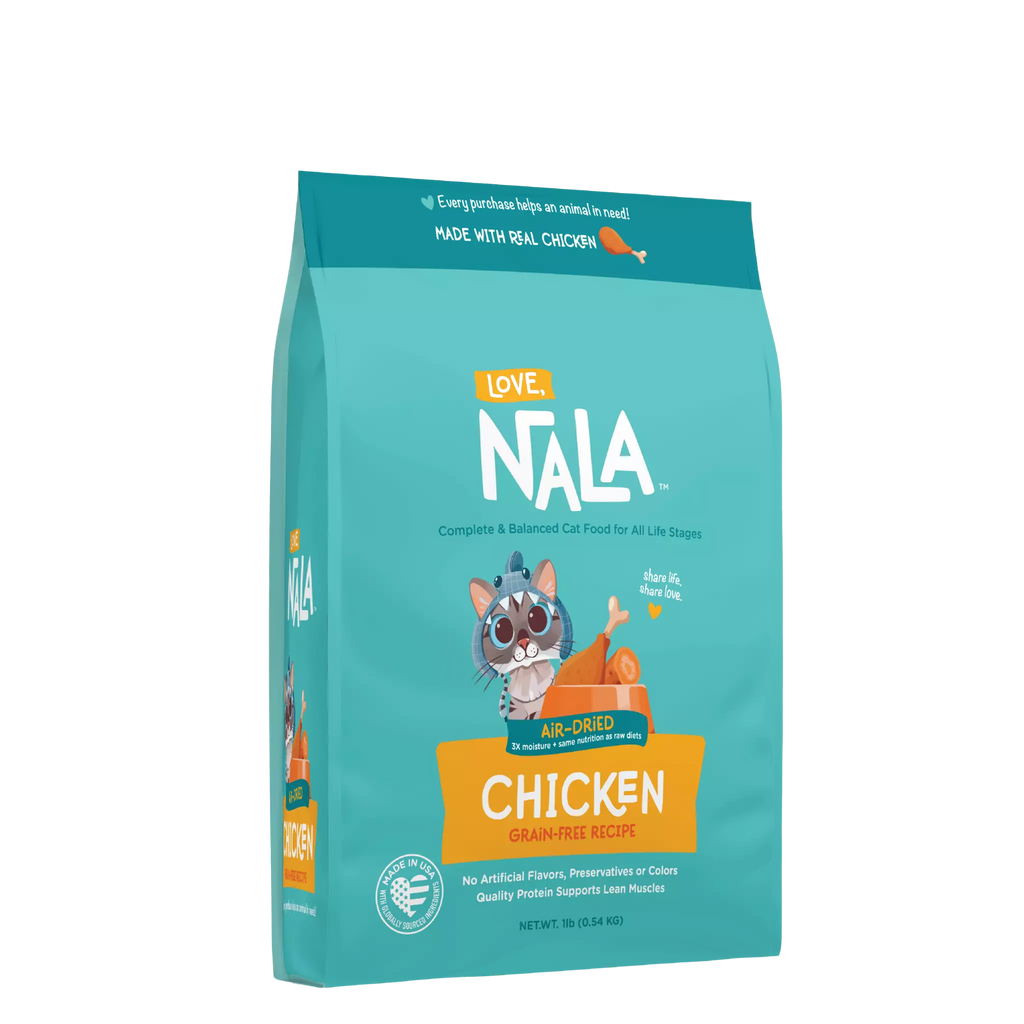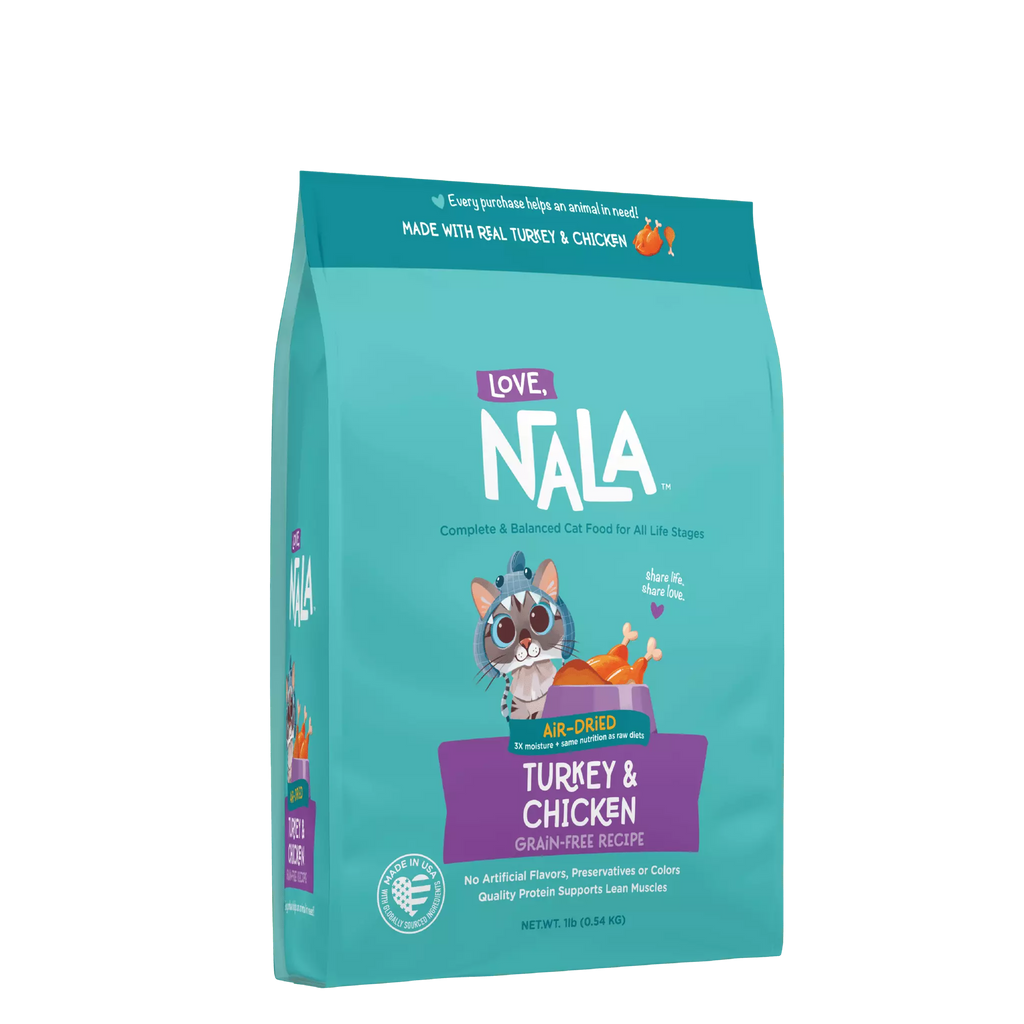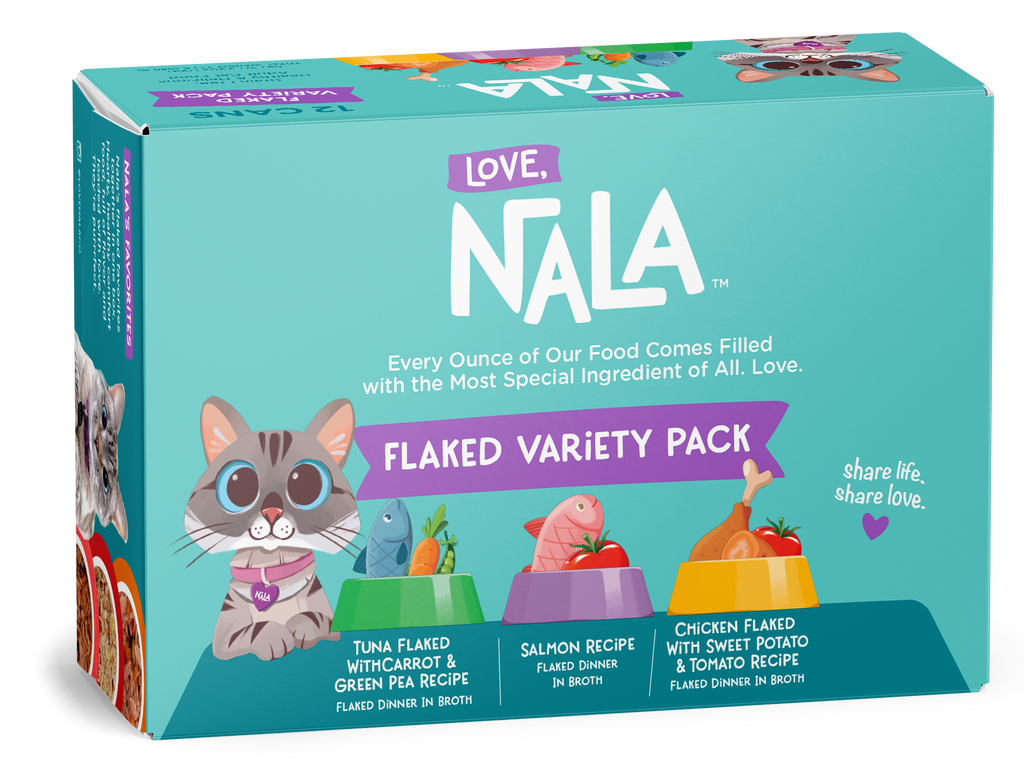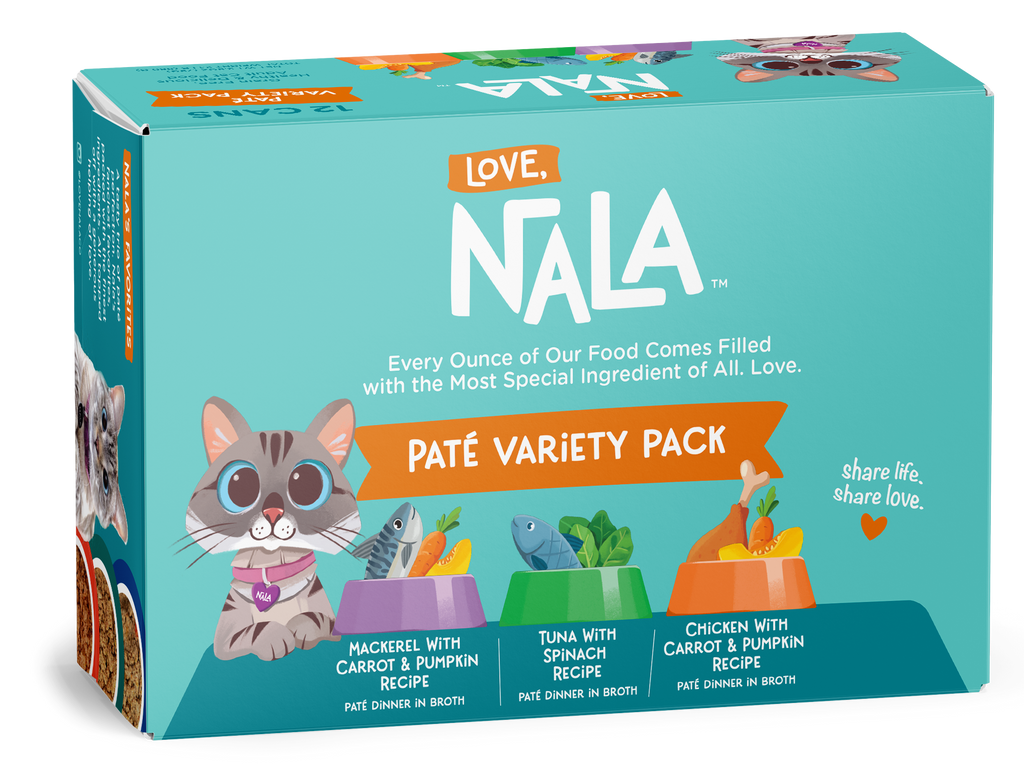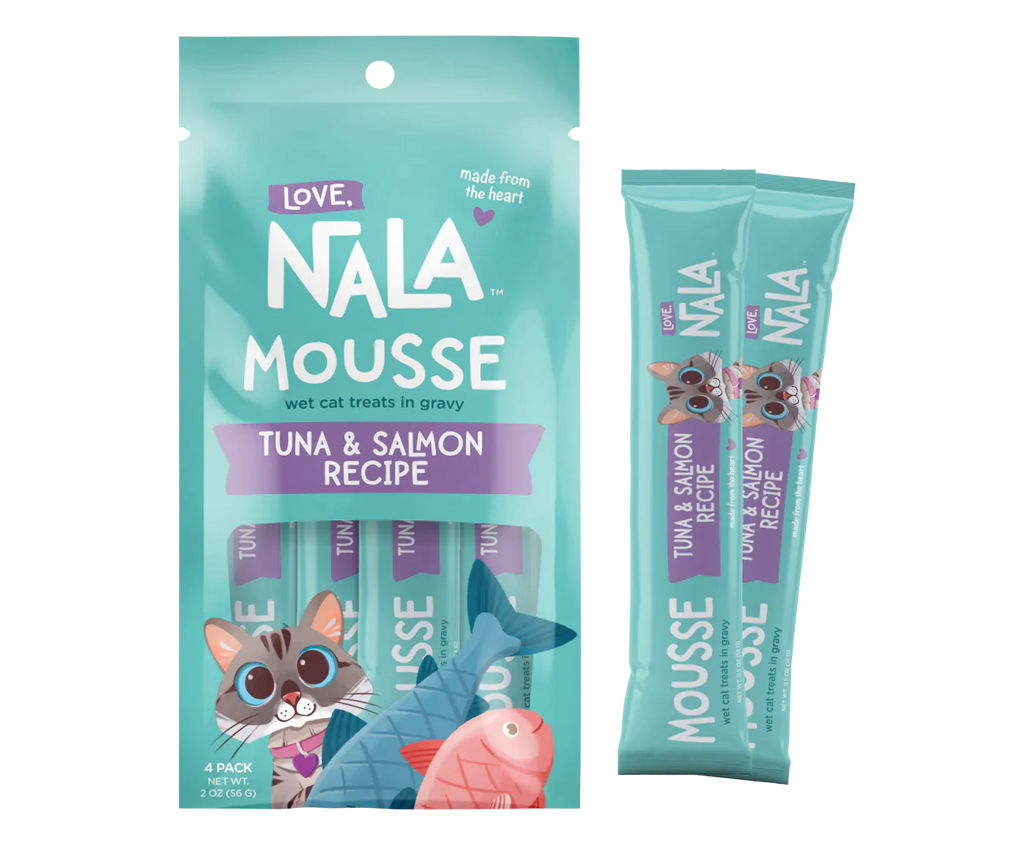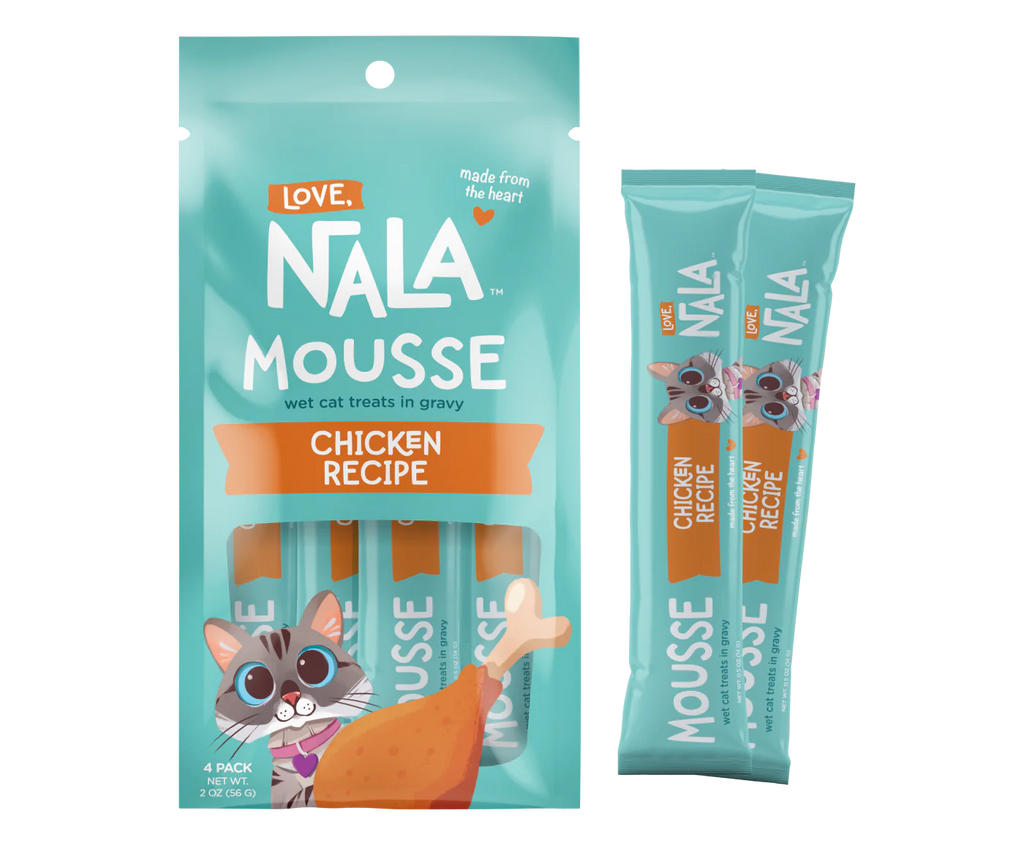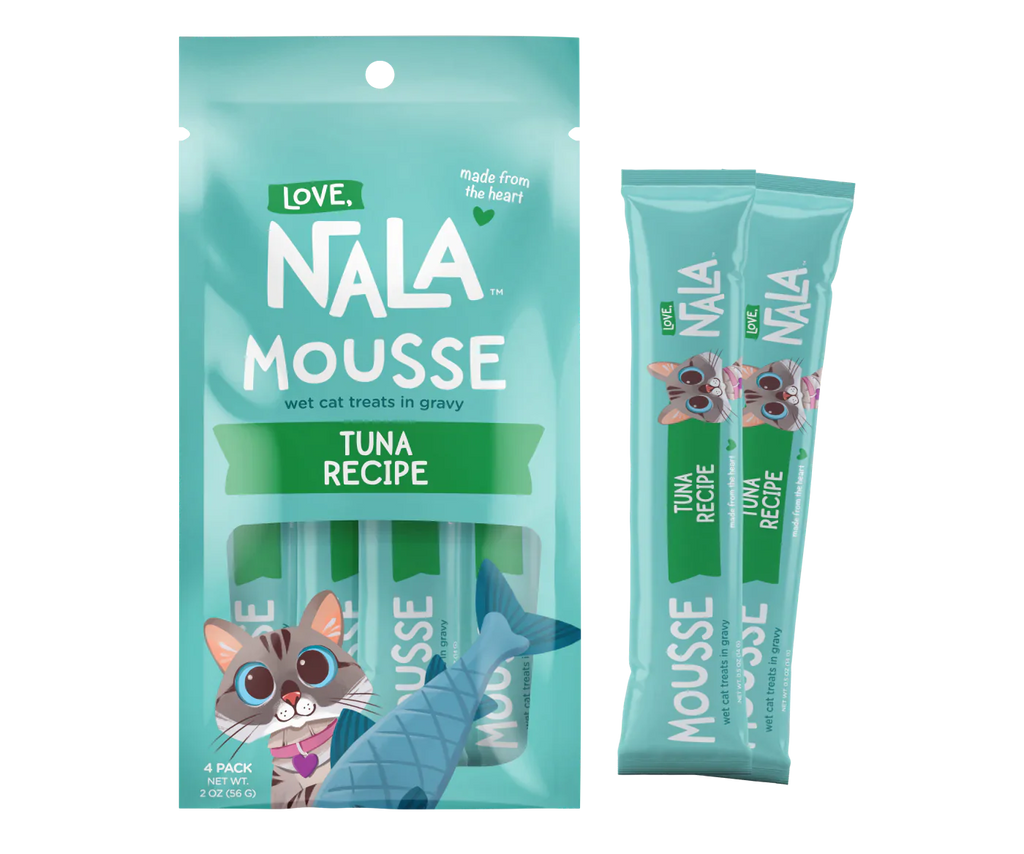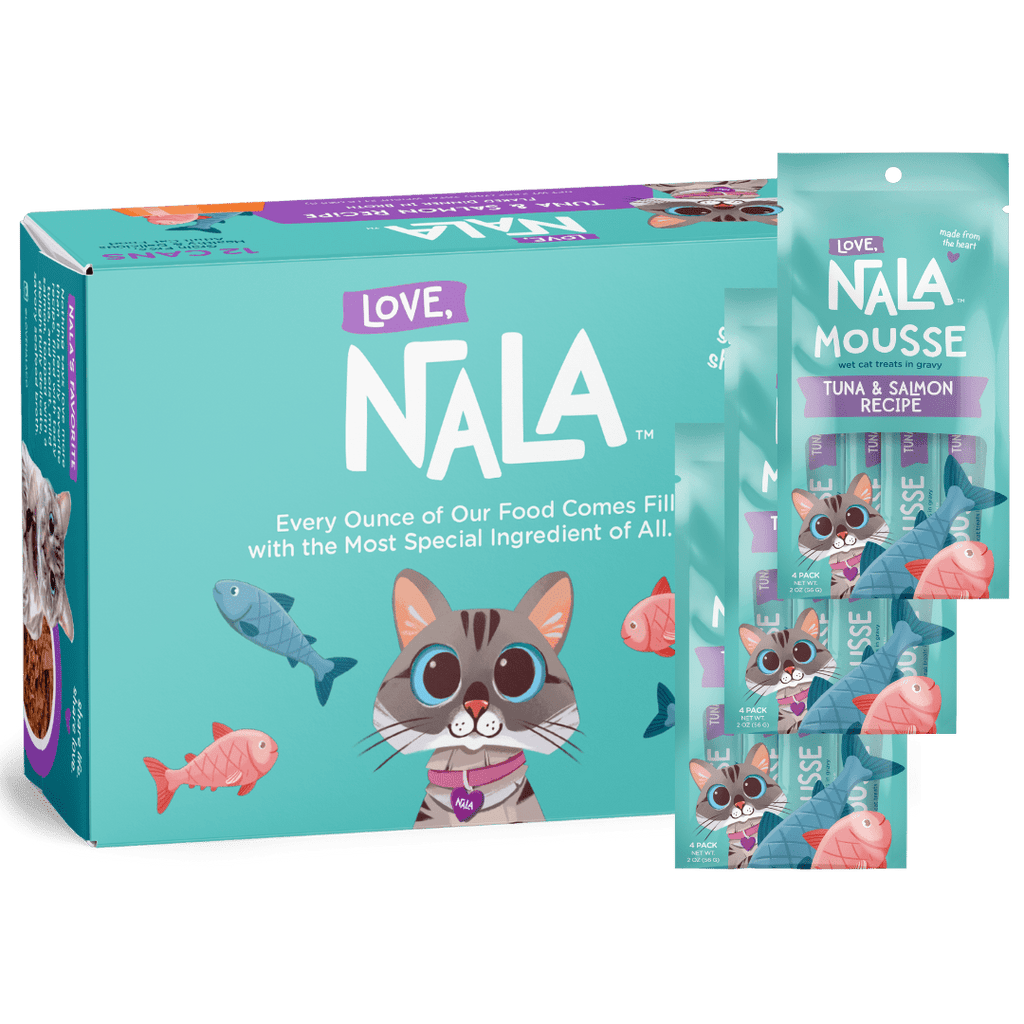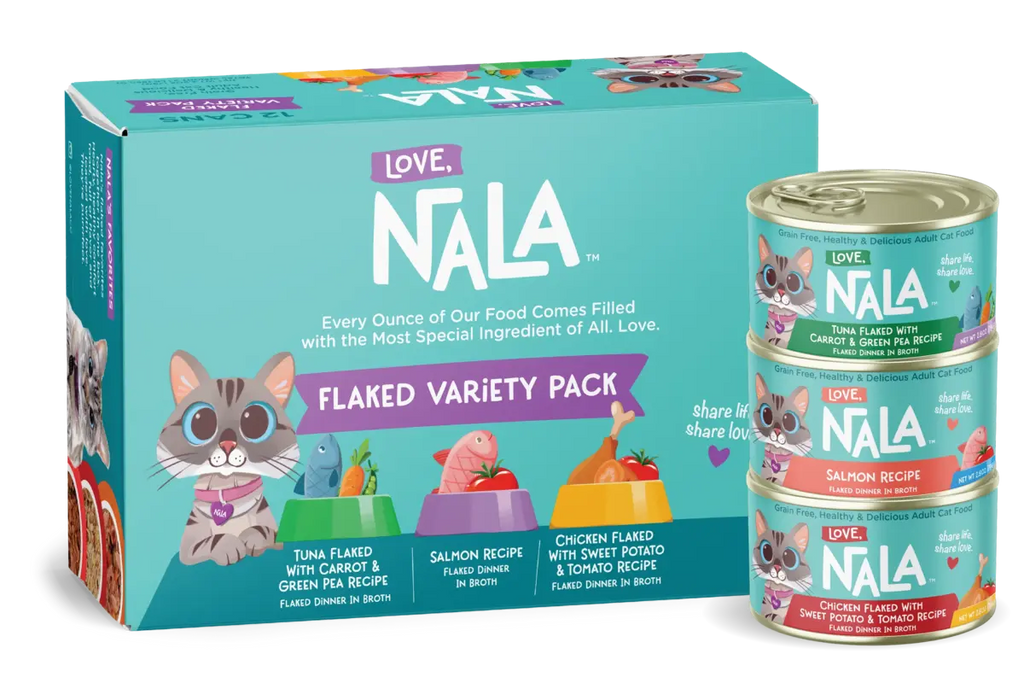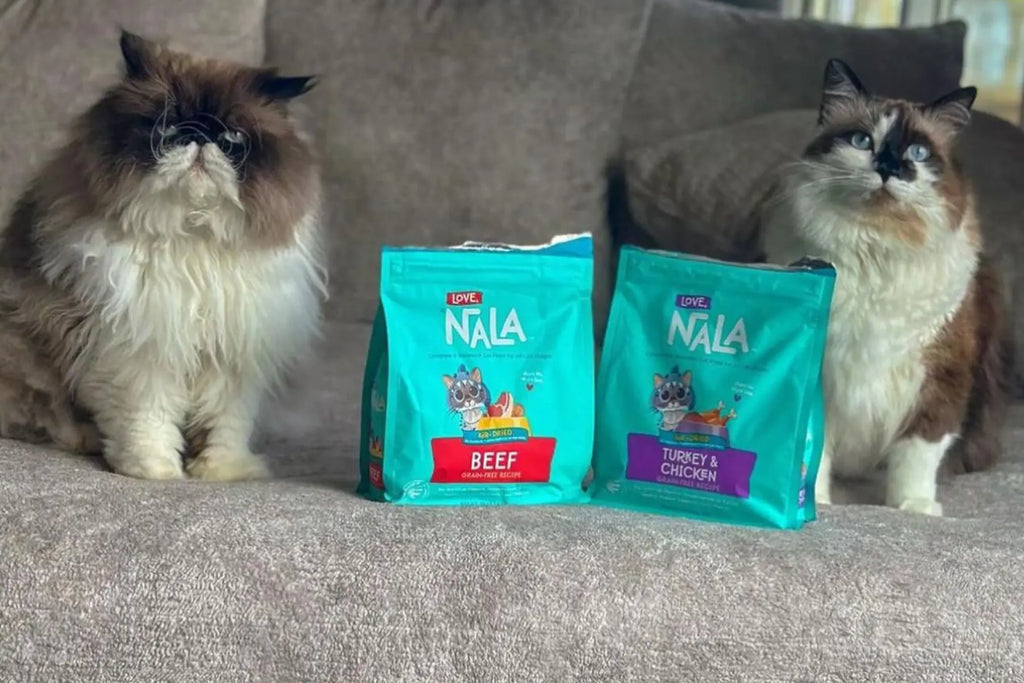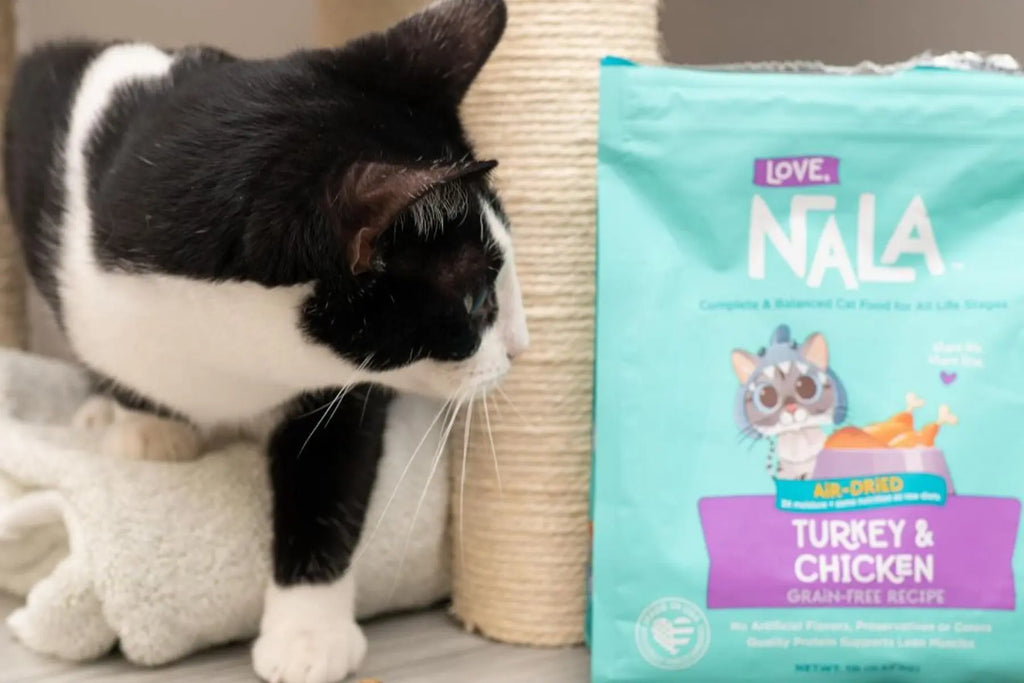The evolution of pet nutrition has witnessed numerous trends, but few have caught the attention of cat owners like air-dried cat food. This innovative approach to the feline diet offers a blend of convenience and nutritional value, positioning it as a compelling alternative to traditional cat food options. As cat owners increasingly prioritize the health and well-being of their pets, the demand for high-quality, nutritious, and convenient feeding solutions has surged. Air-dried food for cats meets these needs by providing a diet that's not only rich in essential nutrients but also closer to what cats would naturally consume in the wild.

The Science Behind Air-Drying
The Process
Air-drying cat food is a meticulous process that slowly evaporates moisture from the ingredients under controlled conditions. This method employs air circulation at low temperatures, which is crucial for preserving the food's natural structure and nutrient content. Unlike freeze-drying, which can be costly and time-consuming, air-drying is a more efficient technique that maintains the food's integrity without compromising on quality. This process ensures that the nutritious cat food remains rich in proteins, fats, and essential nutrients, making it an ideal choice for pet owners looking for a diet that supports their cat's vitality.
Enhancing Flavor and Palatability
The concentration of flavors that occurs as moisture is removed results in a final product that is highly attractive to cats, encouraging even the pickiest eaters to indulge. This natural enhancement of taste, without the need for artificial flavorings, makes air-dried food a preferred option for both cats and their owners. The appeal of these rich, concentrated flavors ensures that cats receive all the nutritional benefits of their diet, making every mealtime a rewarding experience.
Nutritional Advantages of Air-Dried Cat Food
High Protein Content
Cats are obligate carnivores, requiring a diet high in animal protein to thrive. Air-dried cat food excels in meeting this critical dietary need by preserving the high protein content of its meat-based ingredients. This process ensures that cats receive the essential amino acids necessary for muscle maintenance and immune function. The high protein content, akin to what they would consume in a natural diet, supports lean body mass and provides the energy cats need for their daily activities.
Vitamins and Minerals Preservation
This technique minimizes the loss of nutrients often seen in traditional cooking methods, ensuring that your cat receives a balanced and nutrient-rich diet. Below is a more detailed exploration of the key nutrients preserved in air-dried cat food and their significant benefits:
- Vitamin A: This vitamin is crucial for maintaining good vision, especially in low-light conditions. It also supports the immune system and is vital for the health of various bodily functions, including skin maintenance and fetal development. By consuming air-dried cat food rich in Vitamin A, cats can enjoy the dual benefits of robust vision health and enhanced immune support.
- Vitamin D: Essential for regulating calcium and phosphorus levels in the blood, Vitamin D plays a critical role in the absorption of calcium, which is necessary for maintaining strong bones and teeth. The preservation of Vitamin D in air-dried cat food ensures that cats receive adequate support for bone health and development.
- B Vitamins: The B Vitamins, including B1 (Thiamine), B2 (Riboflavin), B3 (Niacin), and B6, are crucial for supporting metabolic activities and energy production in cats. These vitamins aid in the efficient conversion of food into energy, supporting your cat's overall vitality and well-being.
- Taurine: An amino acid that is not synthesized naturally by cats, taurine is critical for heart health, vision, and reproduction. It supports the proper functioning of the heart and eyes, making it an indispensable part of a cat's diet. Air-dried cat food typically retains high levels of taurine, contributing to the heart and vision health of your feline companion.
- Omega-3 and Omega-6 Fatty Acids: These fatty acids play a significant role in promoting healthy skin and coat, reducing inflammation, and supporting brain health. The balanced inclusion of Omega-3 and Omega-6 in air-dried cat food helps in maintaining the overall well-being of cats, ensuring they have a shiny coat and healthy skin, along with optimal brain function.
- Minerals (Calcium, Phosphorus, Magnesium): Essential minerals like Calcium, Phosphorus, and Magnesium are vital for bone health, nerve function, and overall cellular processes. Air-dried cat food effectively preserves these minerals, providing a well-rounded diet that supports the structural and functional needs of your cat.
Choosing the best cat food is a wise decision for pet owners looking to provide their feline friends with a nutrient-rich diet. This preservation method ensures that the essential vitamins, minerals, and other nutrients are retained, offering a delicious and beneficial meal for your cat.
The Importance of Enzymes
Enzymes aid in breaking down food molecules, making it easier for cats to assimilate fats and carbohydrates. This enzymatic activity is particularly beneficial for cats, optimizing digestion and ensuring they extract maximum nutritional value from their meals. Enhanced digestive efficiency translates to better health, reduced stress on the cat’s digestive system, and more energy for play and exploration.

A Natural Diet for Cats
Air-dried cat food closely resembles the texture and nutrient composition of a cat’s natural prey, making it an excellent choice for mimicking a natural diet. As mentioned previously, by feeding cats a diet that closely mirrors what they would eat in the wild, owners can ensure their pets receive a balanced and optimal diet for cats, promoting longevity and reducing the risk of diet-related health issues.
Choosing the Best Air-Dried Cat Food
Ingredient Quality and Sources
High-quality ingredients directly correlate to the nutritional value and overall health benefits of the food. Look for products that list real meat, poultry, or fish as the first ingredient, as these provide the high-quality protein essential for your cat's health. Additionally, the inclusion of whole, unprocessed ingredients such as fruits, vegetables, and legumes contributes valuable vitamins, minerals, and fiber to the diet.
The Impact of Artificial Additives
Artificial additives can significantly impact feline health, potentially leading to allergies, sensitivities, and long-term health problems. When choosing air-dried cat food, it's essential to select options free from artificial colors, flavors, and preservatives. Natural preservation methods inherent in the air-drying process reduce the need for these harmful additives, making air-dried options a healthier choice.
Reading Label
A detailed label not only showcases the food's nutritional content but also its commitment to quality and safety. This information is crucial for cat owners who prioritize their pet's well-being. The following list offers a deeper insight into each element you should look for on the label to ensure you're selecting the best air-dried food for your feline friend:
- First Ingredient: The prominence of high-quality animal protein as the first ingredient is a strong indicator of the food's quality. This suggests that the primary component of the diet is focused on meeting the natural carnivorous needs of cats, providing a solid foundation for muscle maintenance and overall health. A label that lists a specific type of meat (e.g., chicken, beef, or salmon) first ensures that the product is anchored in a high-quality protein source.
- Whole Foods: Ingredients should be recognizable and whole, such as specific types of meat, vegetables, and fruits. This indicates a natural and minimally processed food that contributes to a well-rounded and balanced diet. Whole foods are rich in natural nutrients, offering more health benefits compared to processed or "meal" ingredients, which can sometimes lose nutritional value during manufacturing.
- Protein Content: High protein content is essential for a cat's diet, supporting their energy levels, muscle maintenance, and overall health. The label should explicitly state the percentage of protein, helping you ensure that the food meets your cat's carnivorous dietary needs. A high protein content, derived from quality animal sources, is a hallmark of superior healthy cat food.
- Nutritional Adequacy Statement: This statement confirms that the food meets the nutritional levels established by the AAFCO Cat Food Nutrient Profiles for your cat's specific life stage (e.g., kitten, adult, senior). It's a testament to the food's ability to provide a complete and balanced diet, tailored to the nutritional needs of cats at different stages of life.
- Feeding Guidelines: Clear feeding guidelines indicate the manufacturer's understanding of nutritional needs and commitment to your cat's health. These guidelines help you provide the appropriate amount of food based on your cat's size, age, and activity level, ensuring they maintain a healthy weight and overall well-being.
- Manufacturer Information: Opting for products from reputable manufacturers with transparent practices is essential. This information can often be found on the label or the manufacturer's website, providing insight into their commitment to quality, safety, and ethical production methods.
By paying close attention to these key elements, cat owners can make informed decisions that contribute to the health and happiness of their feline companions. As the market for nutritious cat food continues to grow, recognizing these quality indicators becomes increasingly important in selecting the best options for your pet.
Health Benefits for Cats
Enhancing Skin and Coat Condition
One of the most noticeable benefits of feeding your cat air-dried food is the improvement in skin and coat condition. The optimal nutrition for cats provided by high-quality, air-dried diets includes a balance of essential fatty acids, vitamins, and minerals that nourish the skin and promote a shiny, healthy coat. These nutrients also help to reduce shedding and can alleviate skin issues, such as dryness or irritation.
Long-Term Health Advantages
By providing a diet rich in essential nutrients, you're laying the foundation for a lifetime of health benefits, including a robust immune system, healthy organ function, and a reduced risk of chronic diseases such as obesity, diabetes, and kidney issues. The comprehensive nutritional profile of air-dried food supports overall well-being, ensuring your cat remains throughout all stages of life.
Transitioning to an Air-Dried Food Diet
Addressing Common Misconceptions
One frequent misunderstanding is the belief that air-dried food may not provide as much hydration as wet food. While it's true that air-dried food has less moisture content, proper hydration can be easily maintained by ensuring your cat has constant access to fresh water. Another concern is about the cost; while air-dried food can be more expensive upfront, its high nutrient density means you'll need to feed less, potentially making it more cost-effective in the long run.
Practical Tips for a Smooth Dietary Transition
Start by mixing a small amount of air-dried food with their current diet, slowly increasing the proportion of air-dried food throughout 7 to 10 days. This gradual introduction helps your cat adjust to the new textures and flavors while allowing their digestive system to adapt to the new nutrient levels. Monitoring your cat's response to the diet change is crucial; look for signs of improved energy and digestion as indicators of a successful transition.
When to Consult a Veterinarian
A veterinarian can provide valuable insights into your cat's specific dietary requirements and help identify any potential issues before they become serious. They can also offer professional advice on the best air-dried food options based on your cat's age, health status, and lifestyle. Involving a veterinarian in the dietary transition ensures that your cat's move to an air-dried diet is not only smooth but also tailored to support their optimal health.
Sustainability and Ethical Considerations
Environmental Impact
Air-drying technology offers a more eco-friendly alternative to traditional pet food manufacturing processes. Due to its lower energy consumption and reduced need for refrigeration compared to frozen or fresh foods, air-drying has a smaller carbon footprint. This method also minimizes food waste by creating a product with a longer shelf life, reducing the frequency of food spoilage and waste.

Packaging and the Eco-Friendly Consumer
Eco-friendly packaging, made from recyclable or biodegradable materials, is becoming more common as brands recognize the importance of reducing plastic waste. Additionally, some companies are implementing innovative packaging solutions, such as compostable bags or reusable containers, to further minimize their environmental impact. As consumers become more environmentally conscious, their demand for sustainable packaging options grows, encouraging brands to adopt practices that align with the values of eco-friendly pet ownership.
The path forward in nutrition for cats is one marked by innovation and a deeper understanding of cats' dietary needs. Air-dried cat food stands at the forefront of this evolution, offering a diet that is both nutrient-rich and aligned with natural eating habits. The future of cat nutrition looks promising, with advances in food technology and a growing emphasis on sustainability and ethical production practices paving the way for even healthier, more environmentally friendly feeding options. As we continue to explore and understand the best practices for feeding our pets, we can look forward to a world where every cat benefits from a diet that promotes a vibrant, healthy life.
